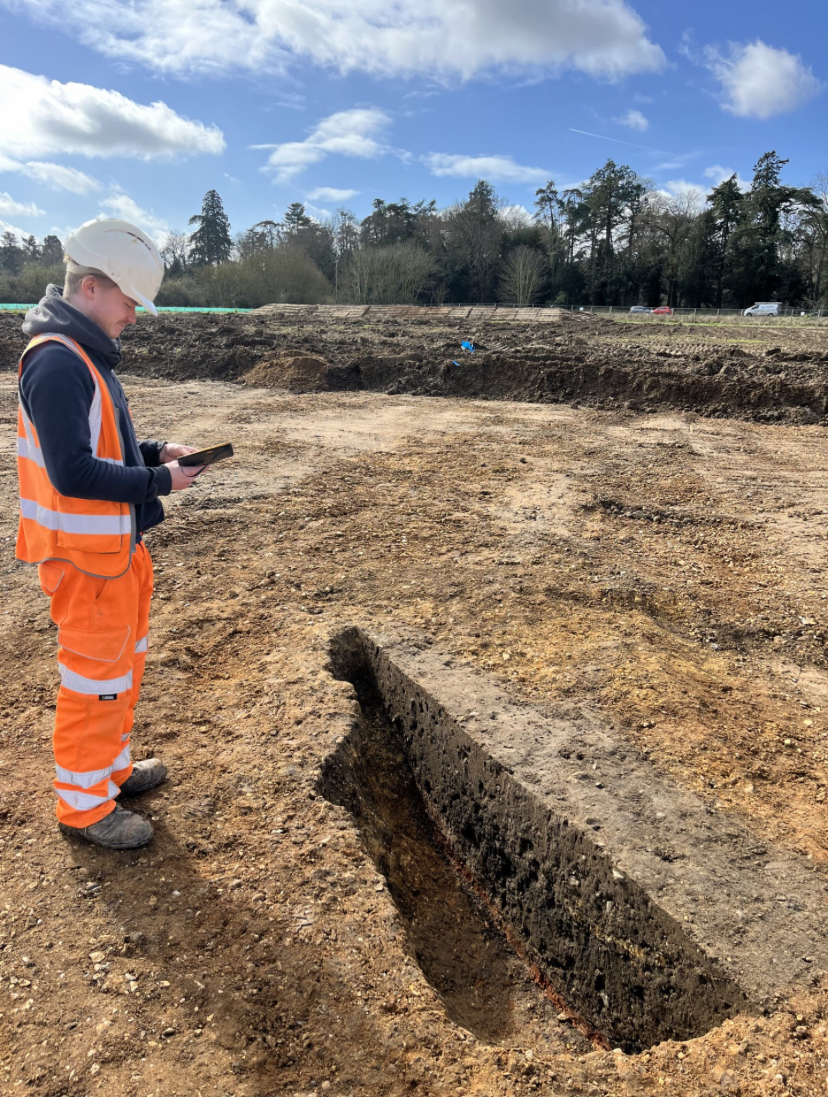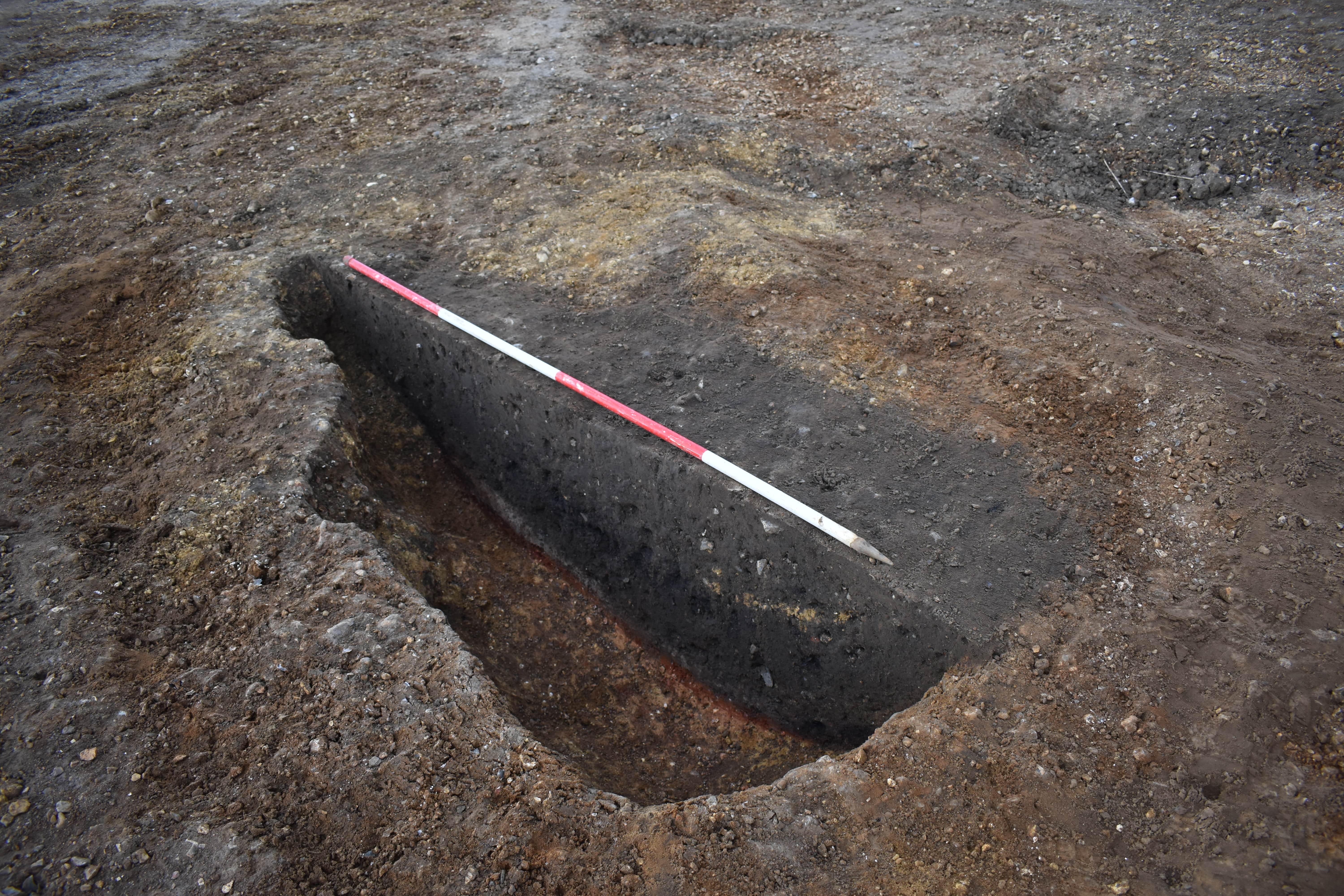This week sees Will tell us all about what he’s been up to on site.

Will on site, using his phone to record the archaeological feature.
“The day begins with me arriving on site around 7:40 questioning why I chose a career that involves me waking up so early and is so predicated by the Great Outdoors. Those thoughts quickly dissipate when I remember what is waiting for me on site, an oven. The sleepiness leaves with a jolt as I hear the huge diggers and dumpers struggling to make their way through the mud and puddles. I don my somewhat faded and muddy waterproof PPE, grab my tools and head out to site, being careful to keep my distance from the machines.
On arrival I am greeted by the unpleasant realisation that my oven has yet again filled with water over the weekend. I grab my trusty sponge and bucket and begin to bail the feature. Thankfully I make quick work of it as the unreliable British weather has given me plenty of opportunity to hone my bailing skills.

Half section through the oven.
The week before I had excavated one of the quadrants and revealed multiple fills, two of which were brimming with animal bone and slag. The slag led me to believe that the feature was related to metal working and was perhaps a furnace, but it is also possible that this slag was deposited in the oven at a much later date. My most interesting find was in the layer of ash at the bottom, buried deep there was a small metallic object in the shape of a blade. Being the first person to see such a find, after hundreds of years, is one of the most rewarding parts of this job and is one of the reasons I wanted to become an Archaeologist. It is incredibly hard to part with such amazing artefacts as these, but excuse the pun, I “dug deep” and reluctantly placed it in a bag and assigned it a small finds number. I also made sure to leave the fired clay oven lining in situ as it can be used to date the feature. Interestingly, the fired clay retains a magnetic signature and because magnetic north changes over time, you can estimate how old this feature is based on where magnetic north was when the clay was fired.

The oven fully excavated. You can clearly see the burnt lining (darker orange areas).
Today's work involves excavating the second quadrant which happens to be in the flue of the oven. A flue’s purpose is to transfer heat in much the same way as a chimney does. I carefully take samples from each layer that I find to ensure that I don't miss anything. This is relatively straightforward to dig and photo as the flue is shallow and does not have an oven lining. Next, I need to draw a mirror section of the feature. I set up my string line and measuring tape, but it takes some thought to work out the complex stratigraphy. Undeterred, within no time I have the drawing of both sections of the oven for our records. Once I have completed the paperwork and removed the other two quadrants of the oven it is time to begin the tedious task of photogrammetry. This is a time consuming and tricky process where I take hundreds of photos from every angle, whilst battling the sun to avoid shadows. The aim and purpose are to create a “to scale” virtual 3D model of the oven. Whilst very intricate work I remind myself that this process has thankfully replaced the traditional hand planning of features which is even more time consuming and difficult.
Before I know it, I realise that the end of day is drawing nigh, so I quickly label my samples and finds, grab my tools, and amble back to the cabin reflecting on my discoveries and what they might tell us. I take off my soaking wet and muddy PPE and place it in the drying room desperately hoping that I will not need them again tomorrow and wondering why there is no such thing as a self-bailing oven!! I then get back into the warm work van ready to head for home, my day on site is over."


